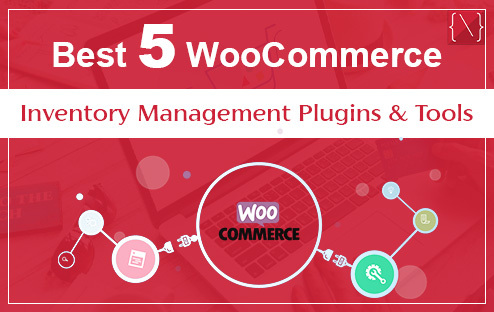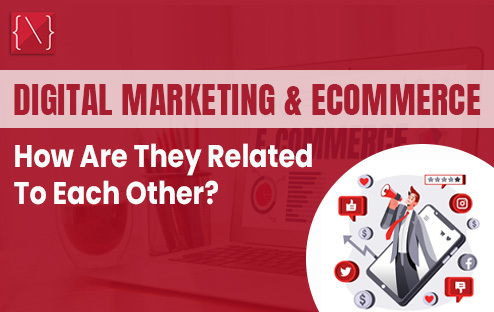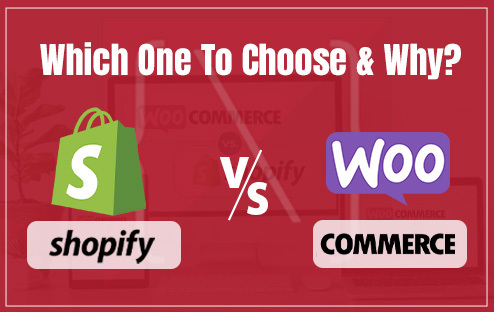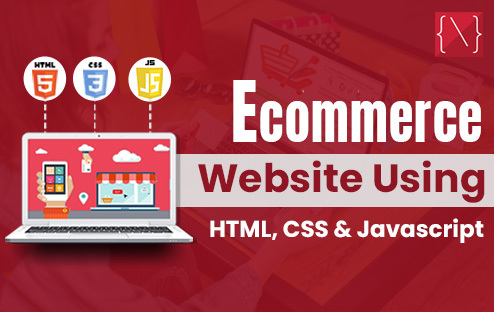
Running a WooCommerce store is an exciting venture, but efficient inventory management is crucial for its success. Manually tracking stock levels can quickly become overwhelming as your business grows. Fortunately, a plethora of fantastic WooCommerce inventory management plugins and tools exist to streamline this process. This blog post will explore the top 5 options to empower you to take control of your inventory and keep your store running smoothly.
Essential Features to Consider:
Before going through the specific plugins, let’s explore some key features to prioritize in your inventory management solution:
- Low Stock Alerts: Be notified when product quantities dip below a predefined threshold to prevent stockouts and ensure a seamless customer experience.
- Multi-location Support: Manage inventory across various warehouses or retail locations, enhancing operational efficiency for businesses with a physical presence.
- Product Variation Management: Effectively track stock levels for products with multiple variations (size, color, etc.), crucial for businesses offering a diverse product range.
- Reporting and Analytics: Gain valuable insights into inventory performance, sales trends, and customer preferences. This data empowers you to make informed decisions regarding stock levels, purchasing, and marketing strategies.
Top 5 WooCommerce Inventory Management Solutions:
- ATUM Inventory Management for WooCommerce:-
ATUM stands out as a comprehensive and free inventory management solution for WooCommerce stores. It boasts a user-friendly interface and supports various product types, including simple products, variations, grouped products, and external products. ATUM offers features like bulk editing, purchase order management, reporting, and low stock alerts, making it a powerful free option for businesses of all sizes.
- Smart Manager for WooCommerce:-
This feature-rich plugin caters to stores managing large or complex inventories. Smart Manager excels in bulk editing capabilities, allowing you to efficiently update stock levels, prices, and other product information across numerous items. It also provides functionalities like low stock alerts, purchase order management, and insightful reporting to give you a clear view of your inventory health.
- WooCommerce Multi-Location Inventory Management:-
If you operate with multiple warehouses or retail locations, this premium plugin is a game-changer. WooCommerce Multi-Location Inventory Management streamlines stock management across various locations. It enables you to track inventory levels for each location, set up automatic stock transfers, and even showcase product availability based on customer location, enhancing the customer experience.
Zoho Inventory is a comprehensive cloud-based inventory management system that integrates seamlessly with WooCommerce. This robust solution offers a plethora of features, including multi-channel inventory management, purchase order management, barcode scanning, and detailed reporting. Zoho Inventory is ideal for businesses that require a scalable solution to manage complex inventory operations.
- Finale Inventory eCommerce:-
Finale Inventory is another cloud-based inventory management system offering a powerful integration with WooCommerce. It caters to businesses with high-volume inventory or those that require advanced features like batch tracking, kitting (assembling products from components), and Landed Cost calculations (including all import fees). Finale Inventory provides in-depth reporting and analytics to empower informed decision-making.
Conclusion
Choosing the ideal WooCommerce inventory management solution depends on your specific business needs and budget. Consider the size and complexity of your inventory, the number of sales channels you operate on, and your desired level of automation. By implementing a robust inventory management solution, you’ll gain greater control over your stock levels, reduce the risk of stockouts, and free up valuable time to focus on growing your business.
ALSO READ:- Shopify vs WooCommerce: Which One To Choose And Why?

Digital marketing and ecommerce are two buzzwords that have been dominating the business world in recent years. With the rise of technology and internet usage, these two concepts have become crucial for the success of any business, big or small. While some may think that they are separate entities, the truth is that they are deeply interconnected and rely on each other for growth and success.
To understand the relationship between digital marketing and ecommerce, let’s first define both terms. Digital marketing is the use of various digital channels such as social media, search engines, email, and websites to reach and engage with potential customers. On the other hand, ecommerce refers to the buying and selling of goods and services online. It includes everything from online shopping platforms to online banking and other online transactions.
Now, let’s dive deeper into how digital marketing and ecommerce are related to each other.
Increased Reach and Visibility
One of the main goals of digital marketing is to increase a business’s online presence and reach its target audience. With the use of various digital channels, businesses can reach a wider audience than traditional marketing methods. This, in turn, helps to increase brand awareness and visibility. With more people being aware of a brand’s existence, the chances of attracting potential customers and increasing sales also increases.
Ecommerce, on the other hand, provides businesses with a platform to showcase and sell their products or services online. With an ecommerce website, businesses can reach a global audience, expanding their reach and customer base even further. Digital marketing and ecommerce work hand in hand to increase a business’s reach and visibility, making it easier for them to connect with their target audience and potential customers.
Personalization and Targeting
Digital marketing offers businesses the ability to personalize their messages and target specific audiences based on their interests, demographics, and online behavior. This level of personalization helps businesses to create more relevant and tailored marketing campaigns, which, in turn, increases the chances of conversion.
Ecommerce also allows for personalization through features such as product recommendations and personalized offers based on a customer’s purchase history. This enhances the overall shopping experience for customers, making them more likely to return and make repeat purchases. Digital marketing and ecommerce work together to provide a more personalized and targeted approach, making it easier for businesses to attract and retain customers.
Data and Analytics
Digital marketing and ecommerce both rely heavily on data and analytics to measure their success and make informed decisions. With digital marketing, businesses can track and analyze various metrics such as website traffic, social media engagement, email open rates, and more. This data provides valuable insights into customer behavior and preferences, which can be used to optimize marketing strategies and campaigns.
Ecommerce platforms also provide businesses with data on customer behavior, purchase patterns, and more. This data can be used to improve the user experience, optimize product offerings, and make data-driven decisions to increase sales and revenue. The integration of digital marketing and ecommerce allows businesses to gather and analyze data from various sources, providing a more comprehensive understanding of their target audience and market.
Seamless Customer Journey
In today’s digital age, customers expect a seamless shopping experience, whether it’s online or in-store. Digital marketing and ecommerce work hand in hand to provide a smooth customer journey from the initial awareness stage to the final purchase. Digital marketing efforts drive traffic to ecommerce platforms, while ecommerce platforms provide a seamless and convenient buying experience for customers.
Moreover, with the rise of social commerce, where customers can discover and purchase products directly on social media platforms, the line between digital marketing and ecommerce is becoming even more blurred. This integration allows for a more seamless and effortless customer journey, increasing the chances of conversion and customer satisfaction.
In conclusion, digital marketing and ecommerce are two sides of the same coin. They rely on each other to drive business growth and success in today’s digital landscape. As technology continues to evolve, the relationship between these two concepts will only become stronger, making it crucial for businesses to understand and effectively utilize both to stay competitive.

In today’s digital age, having an online presence is crucial for businesses to thrive and reach their target audience. With the rise of e-commerce, more and more businesses are looking to establish an online store to sell their products and services. When it comes to building an e-commerce website, two of the most popular platforms are Shopify and WooCommerce. Both have their own unique features and benefits, but which one is the right choice for your business? In this blog, we will do a thorough comparison of Shopify and WooCommerce and help you make an informed decision on which one to choose.
Shopify is a leading e-commerce platform that allows businesses to easily set up an online store without any technical knowledge or coding skills. It is a fully hosted solution, which means Shopify takes care of all the technical aspects of running an online store, such as hosting, security, and maintenance. With Shopify, you can choose from a variety of stunning templates and customize your website to fit your brand’s aesthetic. It also offers a user-friendly interface and a wide range of features, making it an ideal choice for beginners and small businesses.
On the other hand, WooCommerce is a free, open-source plugin for WordPress, the world’s most popular content management system (CMS). It is a self-hosted solution, which means you will need to purchase a domain, hosting, and SSL certificate to set up your online store. WooCommerce offers a high level of customization and flexibility, making it a preferred choice for businesses with more advanced needs. It also has a large community of developers constantly creating new plugins and extensions to enhance its functionality.
Now let’s dive into the comparison between Shopify and WooCommerce based on some key factors.
1) Ease of Use:
As mentioned earlier, Shopify is a fully hosted solution, which means you don’t need any technical knowledge to set up your online store. It has a user-friendly interface and offers a drag-and-drop builder to customize your website. On the other hand, WooCommerce requires some technical knowledge to set up and customize your website. However, with the help of WordPress tutorials and a little bit of effort, you can easily get the hang of it.
2) Cost:
Shopify offers a variety of pricing plans, starting from $29 per month for its basic plan. It also charges transaction fees for each sale made through your online store. On the other hand, WooCommerce is a free plugin, but you will need to purchase a domain, hosting, and SSL certificate. However, you have complete control over your costs with WooCommerce, and there are no transaction fees.
3) Customization:
Shopify offers a wide range of templates and themes to choose from, but customization options are limited. You can only make changes to the design elements provided by Shopify. On the other hand, WooCommerce offers endless customization options as it is built on WordPress, which is known for its flexibility and customization capabilities.
4) Payment and Shipping Options:
Both Shopify and WooCommerce offer a variety of payment and shipping options. However, Shopify has its own payment gateway, Shopify Payments, which charges lower transaction fees compared to third-party gateways. WooCommerce, on the other hand, offers integration with various payment gateways, giving you more flexibility in choosing the one that works best for your business.
5) Support:
Shopify offers 24/7 customer support through phone, email, and live chat. It also has a dedicated help center with tutorials and guides to help you with any issues. WooCommerce, being an open-source platform, offers community support through forums and documentation. However, you can also purchase premium support from third-party vendors if needed.
In conclusion, both Shopify and WooCommerce have their own strengths and weaknesses. If you’re a beginner or a small business looking for a hassle-free, all-in-one solution, Shopify may be the right choice for you. On the other hand, if you have some technical knowledge and want full control over your website’s customization, WooCommerce may be a better fit. Ultimately, the decision depends on your specific business needs and budget.
If you’re still unsure about which platform to choose, you can always seek the help of an expert. Cleonix Technologies, the best ecommerce website development company in Kolkata, offers expert guidance and services to help businesses build a successful online store on either Shopify or WooCommerce. With our team of experienced developers and designers, we ensure that your e-commerce website is user-friendly, visually appealing, and optimized for conversions. Contact us today to take your e-commerce business to the next level.

Nowadays establishing an online presence is crucial for businesses looking to thrive in the competitive market. One of the most effective ways to do so is by creating a robust e-commerce website. In this comprehensive guide, we’ll walk you through the process of developing an e-commerce website using the fundamental building blocks of web development: HTML, CSS, and JavaScript.
Understanding the Basics:
Before going through the details of e-commerce development, it’s essential to have a solid understanding of the core technologies involved.
- HTML (Hypertext Markup Language): HTML serves as the backbone of any web page. It structures the content and provides the framework for your website. Start by creating the basic structure of your e-commerce site using HTML tags. Define elements such as headers, footers, navigation bars, and product sections.
htmlCopy code<!DOCTYPE html>
<html lang="en">
<head>
<meta charset="UTF-8">
<meta name="viewport" content="width=device-width, initial-scale=1.0">
<title>Your E-commerce Website</title>
<!-- Additional meta tags, stylesheets, and scripts can be added here -->
</head>
<body>
<!-- Your website content goes here -->
</body>
</html>
- CSS (Cascading Style Sheets): CSS is responsible for the presentation and styling of your HTML elements. Use CSS to define the colors, fonts, layout, and overall visual appeal of your e-commerce site. Create a separate CSS file to maintain a clean and organized code structure.
cssCopy code/* styles.css */
body {
font-family: 'Arial', sans-serif;
background-color: #f4f4f4;
color: #333;
}
/* Additional styling for headers, footers, navigation, and product sections can be added here */
- JavaScript: JavaScript adds interactivity and dynamic behavior to your e-commerce website. It enables features like product filtering, cart management, and real-time updates. Use JavaScript to handle user interactions and create a seamless shopping experience.
javascriptCopy code// script.js
// JavaScript functions for handling dynamic elements and user interactions
Building the E-commerce Structure:
Now that you have a basic understanding of HTML, CSS, and JavaScript, let’s focus on creating the essential components of an e-commerce website.
- Navigation Bar: Design a responsive navigation bar that allows users to easily navigate through different sections of your website. Include links to the homepage, product categories, shopping cart, and user account.
htmlCopy code<!-- Example navigation bar in HTML -->
<nav>
<ul>
<li><a href="#home">Home</a></li>
<li><a href="#categories">Categories</a></li>
<li><a href="#cart">Cart</a></li>
<li><a href="#account">Account</a></li>
</ul>
</nav>
- Product Display: Create a visually appealing layout to showcase your products. Use HTML to structure the product grid and CSS to style it. JavaScript can be employed to implement features such as product filtering, sorting, and displaying real-time updates.
htmlCopy code<!-- Example product grid in HTML -->
<section class="product-grid">
<!-- Product items go here -->
</section>
- Shopping Cart: Implement a functional shopping cart using HTML, CSS, and JavaScript. Allow users to add products, update quantities, and proceed to checkout. Utilize JavaScript to manage the cart state and update the UI dynamically.
htmlCopy code<!-- Example shopping cart in HTML -->
<section class="shopping-cart">
<!-- Cart items and total go here -->
</section>
- Checkout Process: Design a user-friendly checkout process with multiple steps, including shipping details, payment information, and order confirmation. Use JavaScript to validate user inputs and ensure a smooth checkout experience.
htmlCopy code<!-- Example checkout process in HTML -->
<section class="checkout">
<!-- Checkout steps and form fields go here -->
</section>
Optimizing for Performance and Responsiveness:
As you progress with the development of your e-commerce website, consider the importance of performance and responsiveness. Optimize images, minify CSS and JavaScript files, and implement responsive design principles to ensure a seamless experience across various devices.
In conclusion, developing an ecommerce website using HTML, CSS, and JavaScript may seem daunting at first, but with the right planning and knowledge, it can be a rewarding experience. Make sure to do your research, test and debug your website, and seek professional help if needed. And if you’re in Salt Lake, Kolkata don’t hesitate to reach out to CLEONIX TECHNOLOGIES for expert assistance in an ecommerce website development.
About the author
Cleonix Technologies
A professional Web Development Company is highly focused on providing world class and best in the industry standard services in every domain that we work upon.

 AJ 14, Salt Lake, Sector 2, Kolkata - 700091 |
AJ 14, Salt Lake, Sector 2, Kolkata - 700091 |  743 Virginia Ave NE Atlanta, GA 30306
743 Virginia Ave NE Atlanta, GA 30306




